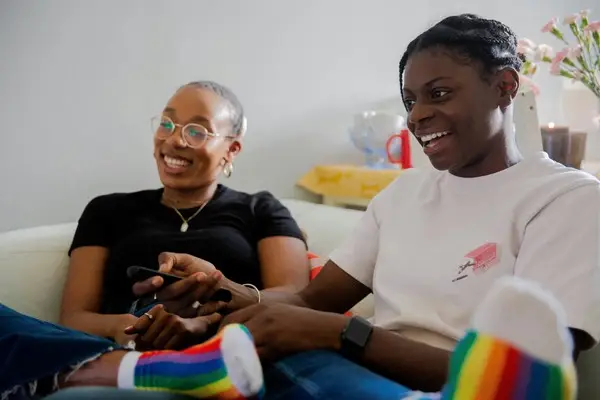Table of Contents
- Introduction
- The Concept of Role Models
- The Sociological Relevance of Role Models
- Cultural Variation in Role Models
- Gender, Race, and Class Dimensions
- Role Models in Contemporary Society
- Critical Perspectives on Role Models
- Challenges and Criticisms
- Fostering Healthy Engagement with Role Models
- Conclusion
Introduction
Role models are figures—real or imagined—who exert a profound influence on how people conceptualize their own identity and aspirations. From a sociological standpoint, role models are more than just idols; they are embodiments of cultural norms, social expectations, and value systems that shape our understanding of who we might become. Whether they are public figures, family members, or historical icons, role models serve as reference points for behavior, morality, and success. By examining the sociological dimensions of role models, we can develop a clearer understanding of how societies cultivate ideals and how individuals internalize these ideals in shaping their personal trajectories.
In everyday conversation, we often hear about the importance of “looking up to someone.” However, far from being a mere figure of speech, this concept has genuine sociological significance. Role models are not only popular in stories of self-improvement and social mobility; they are also embedded in social institutions such as family structures, educational systems, and mass media. For undergraduates in sociology, grasping the concept of role models is essential for understanding processes of socialization, identity formation, and the perpetuation or disruption of social norms. The ways we learn to mimic or distance ourselves from certain figures can reveal the deeper patterns that govern social behavior, inequality, and cultural variation. In this article, we will dissect the phenomenon of role models from multiple sociological angles, shedding light on the complex interplay between individual agency and broader social forces.
The Concept of Role Models
Role models can be defined as persons or symbolic figures that individuals emulate or hold in high esteem. They provide a guiding image, a standard for behavior, and sometimes a blueprint for personal values. At their core, role models offer a social script that can be adopted or adapted, enabling individuals to learn and internalize certain behaviors.
Key Sociological Points
- Imitation and Identification: The process by which people come to see another individual as a role model often begins with imitation, a basic mechanism of social learning. In observing someone’s actions—be it a celebrity who overcame adversity or a teacher who displays unwavering dedication—a person learns both the behaviors and the contexts in which those behaviors are deemed valuable.
- Social Learning Theory: From a theoretical lens, Albert Bandura’s social learning theory highlights how role models become powerful influences. Individuals pay attention to certain figures whose success, charisma, or expertise seems appealing. They then retain the observed behaviors in their mental framework, reproduce them in appropriate contexts, and are motivated by perceived benefits.
- Symbolic Interactionism: According to symbolic interactionists, individuals construct meaning through social interaction. Role models become meaningful symbols that shape how individuals interpret their own possible futures. This symbolic framework often guides self-concept and subsequent actions.
The Sociological Relevance of Role Models
In sociology, role models illuminate various phenomena: socialization, identity formation, group membership, and cultural continuity or change. When we choose a role model, we are also choosing the norms, values, and lifestyles they represent.
Socialization and Norm Transference
During primary socialization—largely taking place within the family—children may view parents or older siblings as role models. Through interactions with these close figures, youngsters learn not only how to dress or speak, but also how to handle conflicts, express affection, and fulfill social obligations. In secondary socialization, especially among peers, educational institutions, and workplaces, individuals often encounter new role models whose influence may challenge or reinforce earlier learning.
- Agents of Socialization: Parents, teachers, religious leaders, and peers can all serve as role models. They transmit norms about authority, reciprocity, and moral conduct. Through repeated exposure, individuals internalize these norms, making them a part of their worldview.
Identity Formation
Role models are deeply entwined with self-concept. By identifying with someone who exhibits desired traits, we negotiate our own identity in relation to broader social standards.
- Embodying Societal Ideals: Culturally, certain traits—such as altruism, resilience, or intellectual prowess—are held in high regard. When these qualities are personified by a role model, they offer a tangible representation of otherwise abstract ideals.
- Constructing a Personal Narrative: People often derive meaning from aligning their personal histories with the stories of their role models. For instance, a student from a disadvantaged background might look up to a professional athlete who grew up in a similar context and ultimately became successful. This identification fosters a sense of hope and purpose.
Group Membership and Cultural Identity
In some cases, role models help solidify one’s membership in a specific group—whether it be an ethnic group, a professional field, or a religious community. By observing revered figures who share their group identity, individuals reinforce their sense of belonging. Conversely, the absence of role models from a particular group can highlight societal inequities or marginalization. This lack of representation may lead some individuals to doubt their capacity to achieve certain social or occupational positions.
Social Mobility
Role models often highlight pathways to upward mobility—displaying how an individual from a modest background can attain success within existing social structures. While stories of social mobility can be inspiring, they can also obscure systemic barriers that make such success a rarity. Yet, from a functionalist perspective, these stories reinforce the notion that society is meritocratic, even if structural inequalities persist.
Cultural Variation in Role Models
The attributes of role models vary across cultures and historical periods. In some societies, religious figures may dominate as exemplars of virtue, whereas in other contexts business magnates or political leaders may hold sway.
- Collectivist vs. Individualist Cultures: In collectivist societies, role models might emphasize communal responsibilities, interpersonal harmony, and respect for tradition. In individualist societies, role models could highlight personal achievement, innovation, and self-reliance.
- Media Influence: Globalization and mass media have accelerated the transnational flow of celebrity culture, leading to role models who transcend national boundaries. Social media, in particular, has reshaped how individuals choose and interact with role models, democratizing access but also promoting superficial benchmarks of success.
Gender, Race, and Class Dimensions
From a sociological standpoint, the quest for role models is deeply stratified along gender, racial, and class lines. Individuals often seek out role models who share key aspects of their identity, believing that such commonalities can provide more realistic and relatable pathways to success.
Gender
Get the full article AD FREE. Join now for full access to all premium articles.
View Plans & Subscribe Already a member? Log in.





